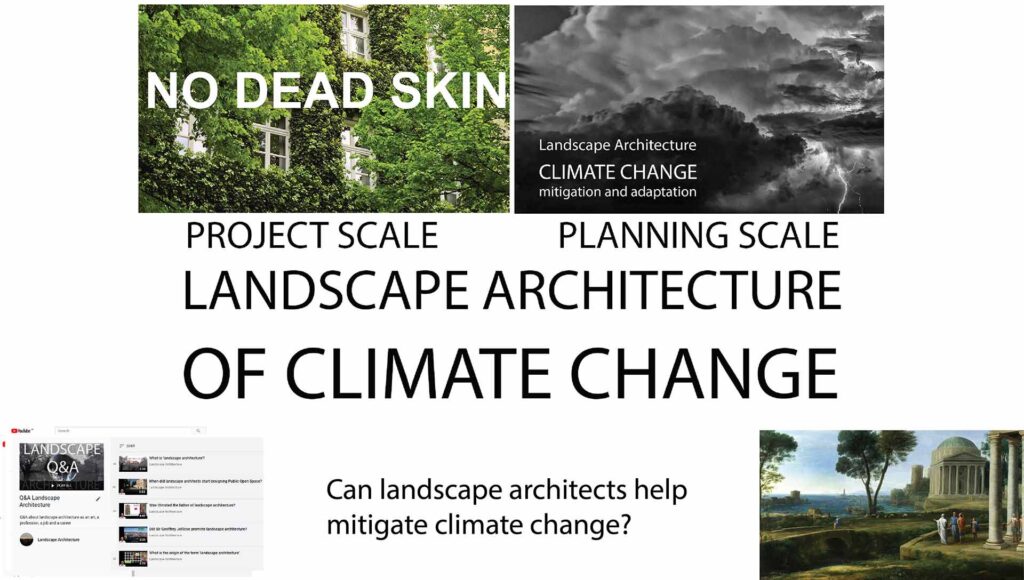How can landscape architects help mitigate climate change? Q&A

Question :Can landscape architects help mitigate climate change?
Short answer. Yes. At the site planning scale, we can ensure development projects have as least as much vegetation cover when complete, as they did before construction began. On large sites, we can plan for carbon capture, microclimate, biodiversity, re-wilding, surface water management, local energy generation and local food production
https://youtu.be/W4J08rh8UkY
Longer answer: Current fears about Global Warming are in line with Frost’s poem. But among cosmologists, the most common view is that the world will end in a Big Freeze. The universe is predicted to keep on expanding until it cools to absolute zero and molecular motion stops – along with the existence of everything we know. Until then, climatic fluctuations will continue.
As you might expect of a landscape architect, I have some scientific knowledge but no expertise. With regard to climate change, I’m more influenced by geologists than by computer models based on recent data.
My belief is that human influence on climate began with the spread of agriculture (about 6,000 years ago), accelerated with the spread of industry after the mid-19th century and further accelerated with the widespread use of oil after the mid-20th century.
Our present worry is Global Warming. But since we are probably at the end of an interglacial warm period, humanity’s next worry, long after my lifetime, is likely to be Global Cooling – when humans stop using hydrocarbons as fuels, feed-stocks and fertilisers.
I believe that landscape architects can help mitigate global warming and that they can adapt the environment to resist global cooling.
I’ve made two videos about climate change mitigation and adaptation.
- The first video, with the title No Dead Skin, argues for adaptation of the exteriors of buildings, including roofs, walls and balconies. The skins of buildings can contribute to growing food, to enhancing biodiversity, to insulation, to generating electricity, to managing rainwater, and to other sustainability objectives. The video is enthusiastic about Singapore’s ‘landscape replacement policy’. It requires new developments to have planted areas which, in total are at least equivalent in area to the development site. So a hundred square meters of land must have, at least, a hundred square meters of replacement vegetation.
- The second video, on Landscape architecture for climate change mitigation and adaptation, starts with a landscape perspective on climate change and then, as examples of what landscape architects could do, looks at five areas where I’ve lived and worked: Upland Britain, London’s Green Belt, Greater London, the Nile Delta and North East India. My overall answer to the question ‘can our landscapes be adapted to mitigate climate change?’ is ‘Yes’.
